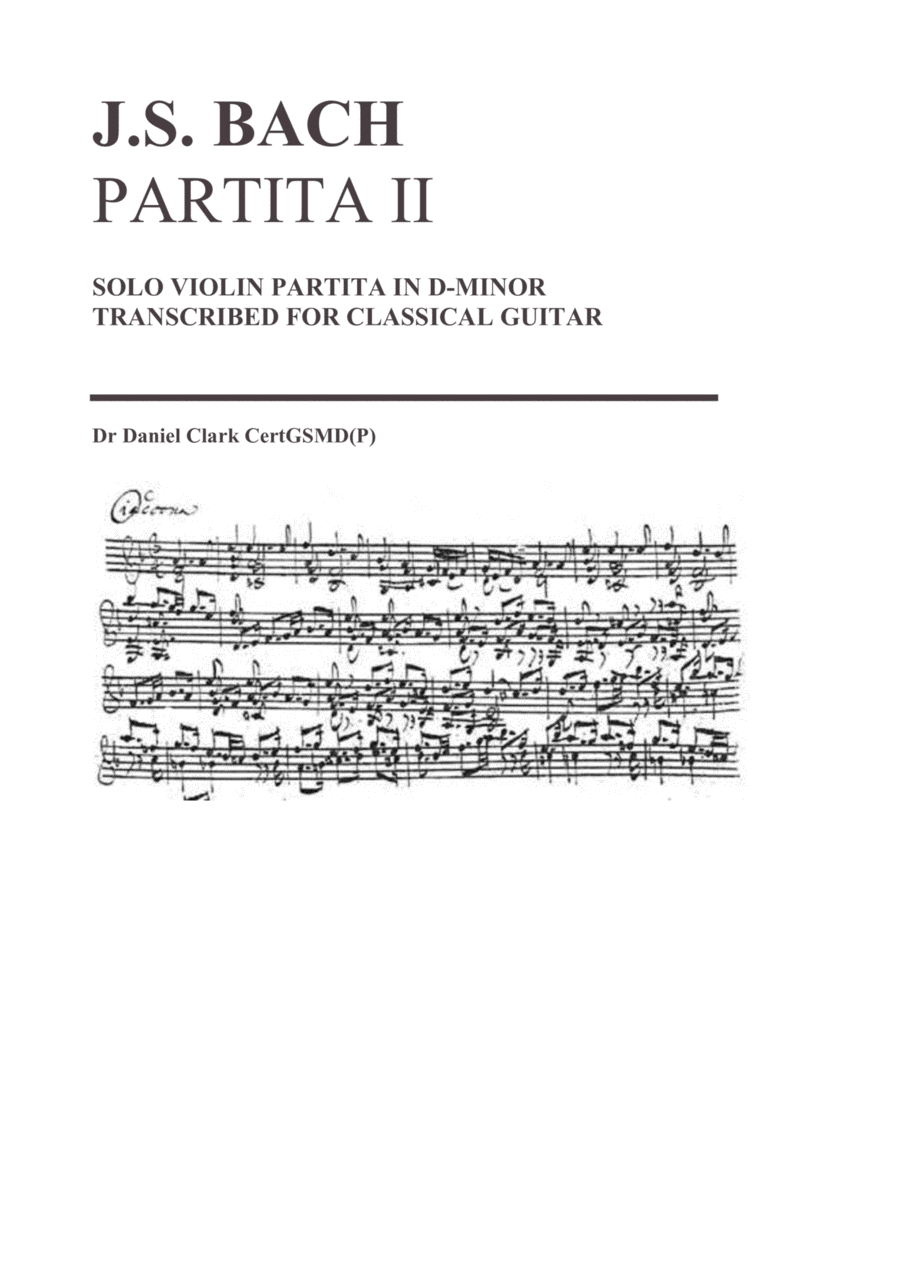Solo Guitar - Level 5 - Digital Download SKU: A0.982523 Composed by Johann Sebastian Bach. Arranged by Daniel Clark. Baroque. Individual part. 26 pages. Daniel Clark #6435265. Published by Daniel Clark (A0.982523). This is a full transcription of Bach’s second violin partita for classical guitar, including the Allemanda, Corrente, Sarabanda, Giga, and the Ciaccona. The transcription is authentic to the original has been made strictly to the original violin manuscript. The partita has been arranged in D-tuning to take advantage of the resonance of the guitar, though the lower D on the guitar is never played since it is below the dynamic range of the violin, (taking into account the octave difference). Bach’s Ciaccona, or Chaconne, in d-minor for solo violin from the second partita is well known on the guitar thanks to Segovia’s arrangement. However, Segovia’s version takes a number of liberties in his arrangement that have the effect of blurring the contrapuntal voices through his decision to harmonise the chords into 6-strings wherever possible. This current arrangement takes the contrary position that it is better to clearly retain the different voices. The working dynamic range of the classical guitar and violin are similar, albeit with an octave difference in pitch. The fact that the classical guitar notation is written an octave higher than it is in relation to the notation for other instruments makes transcribing the violin work for guitar relatively straightforward.  Consequently, I have made no changes to the violin version. This transcription is exact, in the sense that the manuscript for the violin has been used as a basis for the transcription. The articulation of the arpeggios is suggested at the beginning of these sections, which are arranged to be idiomatic to the violin. These realisations can also be adopted on the guitar, though I have not written these out and leave it to the performer to interpret these passages.  Â
